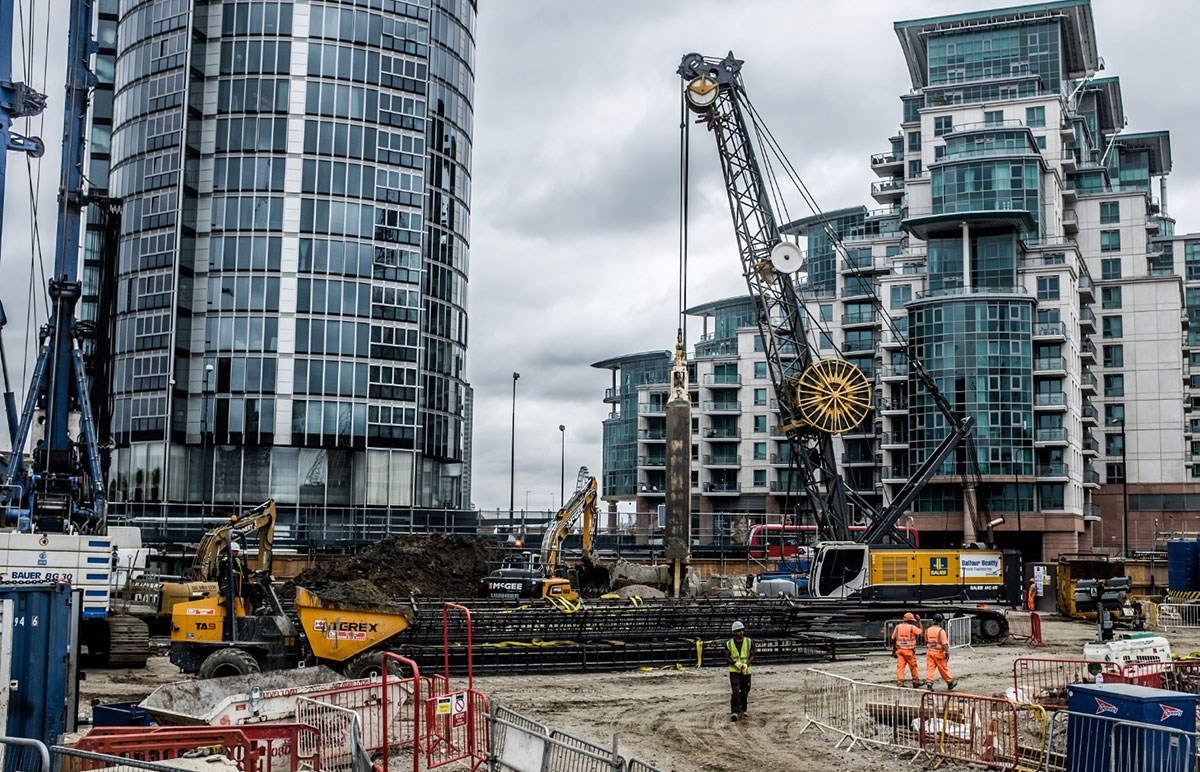The smart Trick of Geotheta That Nobody is Discussing
The smart Trick of Geotheta That Nobody is Discussing
Blog Article
The Definitive Guide to Geotheta
Table of ContentsUnknown Facts About GeothetaIndicators on Geotheta You Need To KnowNot known Details About Geotheta 6 Simple Techniques For Geotheta
They collaborate with civil engineers, architectural designers, designers, and other professionals to incorporate geotechnical factors to consider into the overall task layout and building and construction process. This requires effective synergy, sychronisation, and communication to ensure that the geotechnical aspects straighten with the job goals and meet regulatory requirements.Mining & Materials Design: Principles of drilling, infiltration rates, and variables impacting the choice of exploration technique. Attributes of explosives, shooting systems and blast patterns. Blowing up methods in surface and below ground workings. Unique blowing up methods at excavation perimeters. Resonance and noise control. Mechanical and continuous techniques to fragmentation, consisting of longwall shearing and fullface boring.
Modelling of piece and particle size circulations; comminution as a transfer feature. Comminution innovation: squashing, grinding, size classification. Integrated evaluation of fragmentation and comminution procedures. Provided by: Mining & Materials Design.
See This Report about Geotheta
Bachelor's degree programs in civil, geotechnical, geological, and environmental engineering commonly last 4 years and consist of basic education and learning training courses in English, social scientific research, and the liberal arts, as well as programs in innovative maths, structural geology, and liquid mineralogy. (https://www.producthunt.com/@geotheta1)
Geotechnical engineering includes the analysis of the dirt and rock conditions at a specific website, and their effects for the growth of that website. As the majority of structures count on the ground for assistance, it lacks shock that a comprehensive understanding of the ground conditions, and the viability of structure systems, are essential to the long-term stability and performance of the building or structure.
Specialising in the investigation of geological formations and ground behaviour, geotechnical engineers do clinical examinations and screening to recognize the influence these geological developments might carry the style and building and construction of structure, civil and framework tasks. This experience is crucial for the design and construction of buildings, roads, passages, dams, bridges, and water supply and sewer system.
The geotechnical group at Douglas Partners regularly talk to architects, design engineers, programmers, and builders to make suggestions on layout and growth propositions to make certain that the constructed frameworks are appropriately developed for the ground conditions. For instance, the design of footing systems requires to think about the weight of the structure, the ability of the ground to sustain that weight along with activity resistances and effective construction.
The 4-Minute Rule for Geotheta
This task is greatly simplified by the use our Douglas Map geospatial platform that makes this information conveniently available in a very easy to utilize internet browser user interface. A geotechnical engineer will guide the exploration of boreholes and test pits to gather dirt and other samples, and additionally evaluate surface area features and ground exposures to develop a geotechnical version of the subsurface conditions.
Depending upon the job kind and ground conditions came across, research try this out laboratory testing may to name a few things analyze toughness, compressibility, reactivity and/or permeability of dirt and rock samples. Hereafter information is accumulated and collected, the outcomes are made use of for a geotechnical model of the site, which is typically provided as areas throughout the website.

A geotechnical examination by nature can only evaluate the ground problems at the places pierced or dug deep into. All-natural variants in dirt and rock problems can take place across a site and between test areas. It is consequently excellent practice that the geotechnical engineer be kept throughout building of the job to supply on-site confirmation that the ground problems run into follow the assumptions and suggestions provided in the geotechnical investigation record.
Some Known Details About Geotheta
Geotechnical engineers use their comprehensive expertise of soil and rock to evaluate risk and address troubles on diverse framework projectsGeotechnical design is a specialist branch of civil engineering which looks at the practices of earth materials and the application of dirt and rock mechanics. Engineer of Record. As a geotechnical designer, you will analyze the physical, mechanical and chemical residential properties of dirt and rock in order to develop structures, maintaining structures and earthworks
Geotechnical design is closely connected to and overlaps with, both engineering geology and ground design - https://medium.com/@ianhammond2191/about. It's feasible to be experts in geotechnics or help a geotechnical business however be referred to as an engineering geologist or a ground designer. As a geotechnical engineer, you'll require to: construct and preserve relationships with customers and various other experts associated with the website, throughout each projectmaintain security standards on site bear in mind cost effects when you make recommendationsstudy geological maps and airborne photographs from a series of resources and from different time periodsexamine building and construction prepares to see how viable they are based on your understanding of the siteinvestigate risks or geological dangers for the sitesearch for environmentally delicate functions, such as land fill begin to develop valid and interpretive ground modelsplan area investigationsdrill and analyse samples of bedrock, soil, groundwater and added materials oversee other specialists on sitesolve technical concerns as they arise, such as unanticipated structures at drill sitesmonitor problems during and after construction to make sure structures are steady in the brief and long termadding information collected on site to your first researchcreating geotechnical calculations, illustrations, and 2 or three-dimensional computer designs interpreting the datamaking suggestions concerning the suggested use the website

Report this page